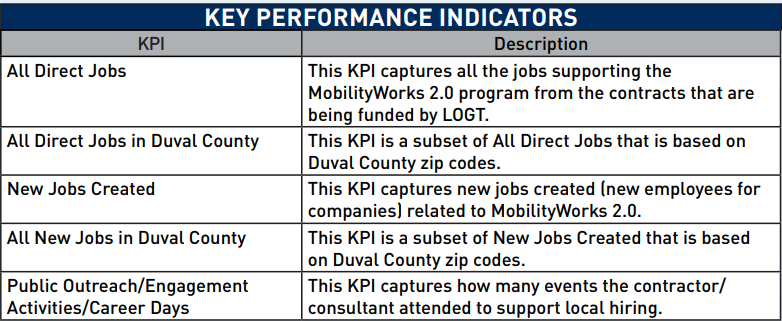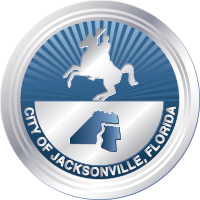Workforce Development
JTA is committed to maximizing local employment opportunities and supporting workforce development. A central mission of the MobilityWorks 2.0 program is to invest in the local economy by hiring and skill building locally, using local small businesses, and procuring area resources whenever possible. Approximately 1,600 direct jobs will be generated from the 17 MobilityWorks 2.0 projects.
30 Year Program Overview
The dashboard provides a detailed look at jobs created and expenditures to date.
$494,843,358
Total Anticipated Revenue from Gas Tax by 2052
17
Total Projects
1,600 Direct Jobs Goal
Goal for Total Jobs including Direct, Indirect and Induced - 2660
News and Events
The Program Management Consultant team has partnered with 10 subconsultants to support their program management efforts. Of the 10 subconsultant team partners, 4 are certified Local Small Business Enterprises (LSBEs) with JTA and Jacksonville Small and Emerging Businesses (JSEBs) with COJ: ADG, C&ES, Meskell, and Clayton Co. Consultants. Five are women-owned businesses: ADG, Meskell, Clayton Co Consultants, C. Robinson Associates Inc, and Aridai.
Key Performance Indicators (KPIs) were developed in 2024 for the MobilityWorks 2.0 Workforce Development Program and will be monitored on a regular basis. Data for tracking the KPIs comes from consultants and contractors who report on the KPIs with their invoices. Beginning in 2024, all procurements include workforce development criteria for vendors in RFPs.

Economic Impact Study
Job estimates for the MobilityWorks 2.0 program come from The Economic Impact Study of Local Option Gas Tax Projects in Jacksonville conducted in 2021 by Dr. Loh from the Coggin College of Business at the University of North Florida. The study includes direct, indirect, and induced job estimates and does not include projected jobs for the Emerald Trail segments that are part of MobilityWorks 2.0.
JTA will continue to report on direct jobs created through the MobilityWorks 2.0 program.
Direct Jobs
Employment created to fulfill the demand for a product or service.
Indirect Jobs
Jobs that exist to produce the goods and services needed by the workers with direct jobs.
Induced Jobs
Jobs that are a result of direct and indirect employees spending money in the community.

